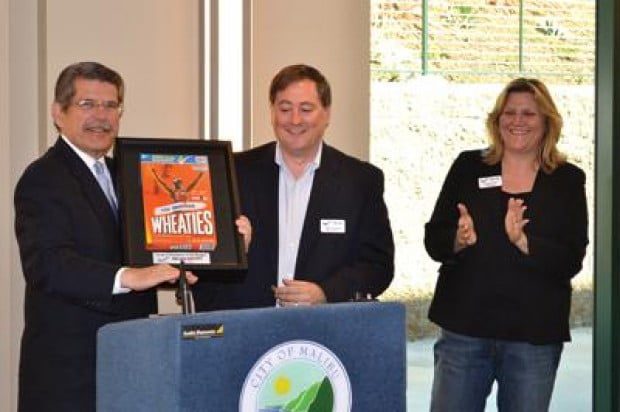
Increased traffic, continuing permitting and zoning difficulties, as well as the necessity for increasing community interaction and nurturing local businesses are some of the issues the mayor notes.
By Knowles Adkisson / The Malibu Times
The annual State of the City breakfast April 27 gave city leaders the chance to take stock of Malibu’s progress and future, with Los Angeles County Supervisor Zev Yaroslavsky in attendance. The Malibu Chamber of Commerce hosted the breakfast at the new City Hall.
Mayor John Sibert said in its first 20 years of cityhood, the City of Malibu had gotten younger-with more children, more schools and more parks. However, the mayor noted that traffic and the number of visitors to the city had greatly increased, which has exacerbated continuing problems of public safety posed by dangerous traffic conditions. Also, the difficulty with zoning, building and permitting processes, Sibert said, is a legacy of the past that has remained.
Sibert then turned to the present, touting recent accomplishments achieved by the city, such as the opening of Legacy Park and the new City Hall. The city has also benefited from actively seeking out expert scientific opinions on its environmental issues, the mayor said. One major example was John Izbicki, a U.S. Geological Survey hydrologist, whose research on water quality in central Malibu appears to lend credence to the city’s claims that it is not responsible for water pollution in the area.
However, Sibert said that another legacy of the old Malibu, lawsuits, remains. Instead of working together on water issues, the Malibu and environmental organizations have continued to be locked into litigation. Sibert said the city was working to rebuild relationships with environmental organizations such as the Santa Monica Bay Restoration Commission, Heal the Bay and the Southern California Coastal Water Resource Project.
Those relationships would be needed in the future, Sibert said, to invest in clean water instead of attorneys.
Another major task confronting Malibu as it moves into its third decade as a city is safety on Pacific Coast Highway, the mayor said. Making the highway safer would be daunting, he said, since the highway was divided between multiple jurisdictions, each of which hold different expectations and possess limited budgets.
Finally, Sibert said Malibu needed to continue to nurture a sense of community along its narrow 27 miles of coastline. The proliferation of parks, community events and such meeting places as the farmer’s market in the Civic Center meant that people did not just run into each other at Ralphs supermarket or Starbucks coffee anymore. In a city so spread out and fragmented in terms of geography, continuing to develop a sense of community would be crucial to the long-term health of the city. One major aspect of Malibu that contributed to its sense of community, Sibert added, was the small businesses that serve residents. Sibert said those small businesses needed to be nurtured in the future.
As for the county, Yaroslavsky spoke to the audience about governance during the current dour economic climate. The supervisor said, prior to the recession, Los Angeles County had kept about $1 billion in reserve in case of emergencies. In the lean years that followed the collapse, Yaroslavsky said the county had been forced to dip into the reserve to cover essential services. While the reserve has now dwindled to about a quarter of its former size, Yaroslavsky credited its presence as a safety net for keeping the county afloat during the recession.

